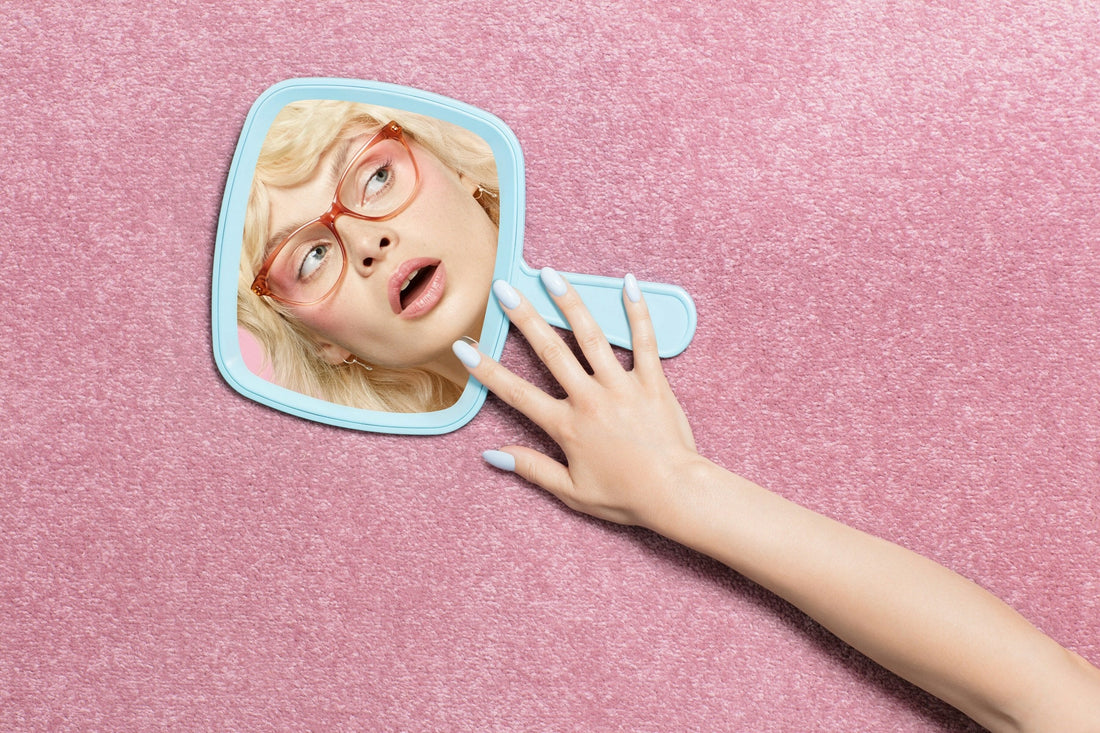Hello Chumba Fam, we'd love to share with yu a bit of nerdy hair science regarding on scalp lightening. As you may know this is one of our specialities in the salon and we get a lot of questions around this topic, especially from other stylists.
We all know that so many clients love the transformative power of scalp bleaching, but the process can sometimes come with discomfort—especially for the scalp. Some tingling or warmth may be expected, but when the sensation turns into burning or irritation, it raises the question: Is this normal?
Understanding the science behind bleach burns, learning how to prevent them, and knowing the best ways to soothe the scalp afterward are crucial for maintaining scalp health. This guide explains why bleaching can cause irritation and highlights a recommended post-bleach care routine featuring the INNOluxe Calm Down range—a collection of products designed to keep the scalp healthy and comfortable.
The Science Behind Bleach and Scalp Sensitivity
Hair bleaching involves strong chemicals such as hydrogen peroxide and persulfates (ammonium, potassium, or sodium persulfate) to break down melanin and lighten the hair. However, these ingredients also affect the scalp by significantly altering its pH balance.
Why Does Bleach Cause Burning?
-
High pH Levels:
- The scalp naturally maintains a pH of 4.5–5.5, which helps protect against irritation and infection.
- Bleach has a pH of 9–11, making it highly alkaline. This disrupts the scalp’s natural barrier, leading to dryness, itching, and even chemical burns.
-
Heat Production:
- Bleaching is an oxidation reaction, meaning it generates heat. The more heat produced, the greater the potential for scalp irritation.
-
Over-Processing & Sensitivity:
- Individuals with sensitive skin are more likely to experience irritation.
- Leaving bleach on for too long or overlapping onto previously bleached hair increases the risk of chemical burns.
Bleach Burns: What’s Normal vs. What’s Not?
✔ Mild Tingling & Warmth: Normal—some discomfort is expected due to the chemicals at work.
✔ Slight Redness After Bleaching: The scalp may appear pink but should return to normal within a few hours.
✖ Intense Burning During Processing: Not normal—bleach should never feel painful. If it does, it should be rinsed out immediately.
✖ Blistering, Peeling, or Scabbing: These are signs of a chemical burn that require immediate attention.
✖ Persistent Itching, Swelling, or Infection: Symptoms like pus or severe inflammation could indicate an allergic reaction or infection.
How to Soothe and Protect the Scalp After Bleaching
If the scalp feels sensitive or irritated after bleaching, the following steps can help alleviate discomfort and promote healing.
1. Apply a Cooling, Soothing Tonic
After bleaching, the scalp needs hydration and soothing relief. INNOluxe Calm Down Tonic is an excellent choice for calming the scalp.
✨ Key Benefits:
✔ Menthol & Tea Tree Oil: Instantly cool and reduce inflammation.
✔ Antioxidants & Botanical Extracts: Support scalp recovery and hydration.
✔ Lightweight, Non-Greasy Formula: Provides relief without weighing hair down.
This tonic is particularly effective immediately after bleaching, offering instant relief and restoring comfort to the scalp.
2. Use a pH-Balanced, Gentle Shampoo
Most shampoos have an alkaline pH, which can further irritate the scalp after bleaching. INNOluxe Calm Down Shampoo is designed to gently cleanse while maintaining the scalp’s moisture balance.
✨ Key Benefits:
✔ Sulfate-Free Formula: Prevents further dryness and irritation.
✔ Botanical Extracts: Hydrate and soothe the scalp.
✔ Mild Cleansing Agents: Clean the hair without stripping essential oils.
Using a gentle, hydrating shampoo after bleaching can make a significant difference in scalp comfort and hair health.
3. Rehydrate with a Moisturizing Conditioner
Since bleach strips moisture from both the hair and scalp, it is essential to follow up with a nourishing conditioner. INNOluxe Calm Down Conditioner helps restore hydration and elasticity.
✨ Key Benefits:
✔ Rich Hydration: Prevents scalp dryness and nourishes hair.
✔ Softening Formula: Enhances hair texture and reduces brittleness.
✔ Safe for Sensitive Scalps: Gentle enough for regular use without causing buildup.
A good conditioner will help restore hair health while ensuring the scalp remains hydrated and comfortable.
Long-Term Tips for Scalp Health
💡 Before bleaching:
- Avoid washing the hair 24–48 hours before bleaching to allow natural oils to form a protective barrier.
- Apply a scalp protectant (such as coconut oil) before bleaching.
- Always perform a patch test before applying bleach to the entire scalp.
💡 After bleaching:
- Limit heat styling (such as blow-drying and straightening) to reduce additional scalp stress.
- Use gentle, pH-balanced products like the INNOluxe Calm Down range to maintain scalp comfort.
- Space out bleaching sessions—waiting at least 4–6 weeks between treatments helps prevent cumulative scalp damage.
Final Thoughts: A Healthy Scalp Leads to Healthier Hair
While some tingling and warmth during bleaching may be expected, intense burning, irritation, or blistering should never be ignored. Proper scalp care before, during, and after bleaching is essential for maintaining both comfort and hair health.
For those looking to maintain a healthy scalp while achieving their ideal hair color, the INNOluxe Calm Down range is a highly recommended solution:
🧴 INNOluxe Calm Down Shampoo – Gently cleanses while soothing the scalp.
🧴 INNOluxe Calm Down Conditioner – Deeply hydrates and restores moisture.
💧 INNOluxe Calm Down Tonic – Provides immediate relief and cooling for post-bleach sensitivity.
By prioritizing scalp health, individuals can enjoy vibrant, beautifully colored hair without unnecessary discomfort. Taking the right precautions and using the right products will ensure both great colour and a happy, healthy scalp. 💛✨

